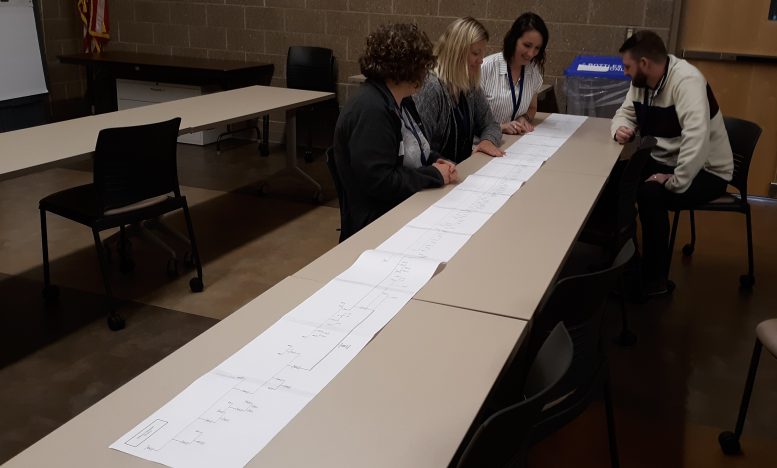By JAN LARSON McLAUGHLIN
BG Independent News
Children who are victims of abuse or neglect often fare better when they can remain with family and within their community.
So Wood County Children’s Services is piloting a program called “30 Days to Family,” which goes into motion immediately when a child is removed from parents.
The program sets ambitious goals for Children’s Services staff to find at least 80 relatives of the child, and find a placement with the family within 30 days.
Grant funding from the state is paying for Kristin Weymer, the “30 Days to Family” specialist in Wood County, to conduct searches to find extended family members of children removed from their parents.
“The regular case workers don’t have time to do extensive relative searches,” explained Brandy Laux, the “30 Days to Family” supervisor.
As soon as the county takes custody of a child, Weymer starts her “detective” work. By using online services like Accurint, Facebook, True People Search, and Find a Grave, she can find dozens of relatives. A family member’s obituary alone can reveal many survivors.
“We call obituaries gold,” said Nolan Hensel, Northwest Ohio “30 Days to Family” coach. “Once you find a couple, you reach out to them and then it’s word of mouth.”
Because the research can be very time-consuming, Weymer is given just two cases at a time.
“It is so intensive,” Laux said.
Weymer just completed her first case for Wood County in the pilot program – with greater success than anticipated.
She was able to identify 257 people in the family tree – and she was able to contact and speak with 75 percent of them.
Within 13 days, the child was placed with a first cousin of the child’s mother.
By contacting so many relatives, Weymer was able to identify others in the family who are willing to be part of a support system for the cousin with whom the child was placed. That may mean offering to help with transportation, or dropping off dinner occasionally, Laux said.
Reaching out to so many relatives also helps Weymer identify other family members who may be willing and suitable to take in the child.
“The goal is to also have a backup,” Weymer said.
“The kid doesn’t have to come back into care,” if other family members have already gone through the approval process, Hensel said.
“All these extended people may not even know the child,” said Sandi Carsey, administrator of Wood County Protective Services. “But we hope they will want to step up and help.”
Though parents are sometimes reluctant to list family members where their child can live, ultimately the placement is better for the child and the parents.
“They very much appreciate this because the child is with a relative,” Weymer said.
And the hope is also that those extended family members will continue being supportive of the child.
“We ultimately want those children to go back to their parents if at all possible,” Carsey said.
Weymer is also charged with searching for other “kin” of children removed from their parents, such as neighbors, church leaders or coaches with whom the children may already have relationships.
The “30 Days to Family” program not only finds homes for children with their own relatives, but it also frees up foster homes for other children.
“We’re always in need of foster families. We don’t have enough for the kids in care,” Carsey said.
Throughout Ohio, the pilot program has had a 67 percent success rate in the first 18 months.
“That’s really amazing,” Hensel said.
The program started after Ohio continued to see an increase in the number of children coming into custody as a result of abuse or neglect. This past January, the state had 15,858 children in care, compared to 13,008 in 2015.
The state grant for the “30 Days to Family” program in Wood County lasts two years.





